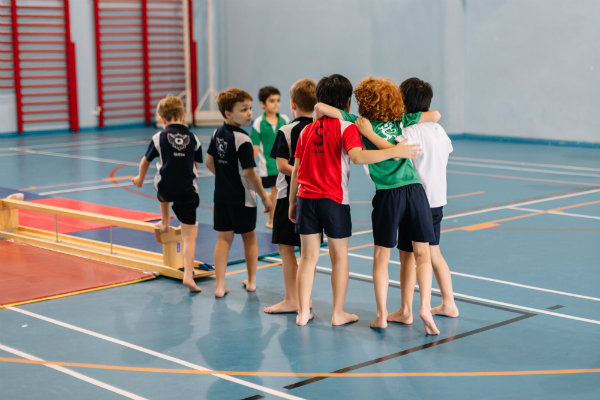What are Third Culture Kids?
Published by SchoolAdvisor | Oct 04, 2017International schools are making a powerful mark in the education world. It is no surprise that more local children are attending international schools due to these schools availability and approach to learning.

In the previous article talking about the growing numbers of local students attending international schools we discussed the learning culture of international schools. Continuing in the series based on research by Garden International School, we look at the emergence of Third Culture Kids within the international school environment.
Third Culture Kids are in the simplest terms, children raised in a culture other than their parents for a significant part of their early developmental years. The third culture in this context is the product of the combination of the first culture, which is that of the child's country of origin, with the second culture, which refers to the culture of the country in which the child currently resides in.
There is also the term Cross-Cultural Kid which is used to describe a child living in an environment that has more than one culture present for a significant period of time. The difference between a Third Culture Kid and a Cross-Cultural Kid is that TCKs traditionally come from families involved in the foreign service, expatriate assignments, the military or missionary service whereas CCKs include children from a wider range of backgrounds including those born to parents from at least two cultures, children of immigrants, refugees or international adoptees.
Much like there are different types of TCKs, there are also different types of CCKs you can find in an international school. The term Educational Cross-Cultural Kids refers to children who remain in their home country but attend an international school with a cultural base that is different from their own.
Life of a Third Culture Kid

From a research done by a now adult TCK, Ruth Van Reken, it was discovered that Third Culture Kids are more likely to be confident in themselves and among people of other cultures, resilient, adaptable, and able to cope in a variety of situations. There is a higher chance for a Third Culture Kid to be bilingual or multilingual due to their lives being exposed to various languages other than their native one.
As children get older and become teenagers, navigating differences can become more difficult, according to Mariella Vittetoe-Castillo, who heads the counselling department at Garden International School.
Vittetoe-Castillo says the impact of negotiating the minefield of culture and identity experienced by local children at international schools is most likely to manifest itself in secondary school.
A student who wishes to remain anonymous, is now studying for his IGCSEs. His wider family hails from the north eastern state of Kelantan, a part of Malaysia where allegiances to tradition are strong and most people speak a dialect of the Malay language. He recalls how family members remarked on how he’d changed when he visited two years after he started international school in Kuala Lumpur: “It wasn’t like I felt completely alienated, but I felt I was partly a foreigner rather than being part of Malay culture.”
And he isn’t the only international school student who’s found it necessary to moderate their behaviour according to the setting. Some say they wear “two hats” in order to be accepted and understood.
“In an international school you are exposed to a lot,” explains Shaun Gan, 18, who is now in Year 13. “I don’t like to admit it, but I do wear two hats. There are two parts to my personality that inter change.”
Like some of his peers, Shaun also changes his accent and the way he expresses himself when he’s with Malaysian friends compared with when he's speaking to a teacher who might be a native speaker of English.
Confrontations during adolescence as students test boundaries are hardly unusual, but local children at international schools may feel even more of a distance between their life and their home, while parents might think children who are more questioning are “answering them back” rather than showing the respect that is so valued within Asian society.
Most teenagers push boundaries, such as defying home rules, isolating themselves or wanting to spend more time with friends rather than family. Parents may not see these as TCK identity-related issues,” says Vittetoe-Castillo. “But there’s a point where it can become a clash of cultures -- between students and their parents. Parents need to accept that their children are growing up in a culturally diverse environment. They need to have their own process of loss; of understanding that their children's cultural values may be different to theirs.
Many Malaysian parents have already recognised the need to adapt to the different approach to learning and education, as well as the Western-style environment.
Ahmad Sanusi Kamaruddin, 52, says making the decision to join an international school in the first place was like “crossing a line”; an acknowledgement that things could never be the same.
His wife, Hamastura Mahayuddin, better known as Mas, admits there was a year of wondering whether they had done the right thing by their son. “Then I saw the benefits, I saw how much he had grown. Then I said: “This is good. This is right. What they are doing here is right.”
“If we want him to change, we have to change as well,” adds Sanusi. “However, we still need to make him aware of where he comes from. We have to make some adjustments ourselves to be more open while preserving our own values.”
Both Sanusi and Mas, like many Malaysian parents who have chosen an international school education, are on something of a journey, discovering new things not only about their children, but also about themselves.
Mas' son has been at GIS for three-and-a-half years, and he is not the only one who’s learned from the experience. Mas says she’s benefited too. “All the topics he does about global issues, poverty and those kinds of things... He changed me and made me a better person”.
And it’s not only parents who find they have to change. Older generations – people who may be far more traditional – also have to adapt.
Karen Lim, a GIS parent and staff member, says her Chinese-speaking mother decided to learn English after she became a grandmother in her early 50s. She signed up for lessons at a nearby language school and can now communicate with her school-going grandchildren. “They carry on a wonderful conversation,” Karen says.
Children also need to learn to deal with the constant cycle of change they experience at school as students come and go. While Facebook, Skype and the Internet have given people new ways to stay in touch, saying goodbye remains a bittersweet experience for many.
To cope with the regular cycle of loss -- a key characteristic of the TCK -- GIS has developed its own ceremony to recognise the contribution of those saying goodbye, and help everyone who’s left behind understand what leaving means.
Despite the challenges, the benefits of an international education are clear. Children are in a position to become outstanding speakers of English and develop a raft of professional skills from confidence in public speaking, to the ability to live in different environments with people of diverse backgrounds.
“The children don’t see any differences with each other,” says Hasliza Zakaria, 43, whose two children have been at GIS for few years. “The children just see everybody for who they are inside, despite the differences in race, religion, country of origin or nationality. None of that matters to them. They are all global citizens. I think that is nice."
.png)
